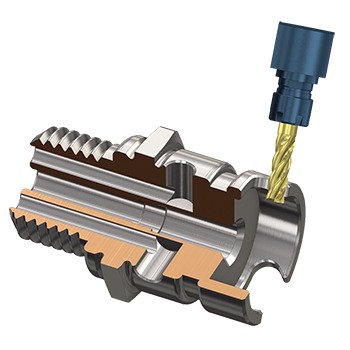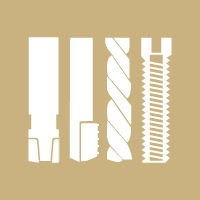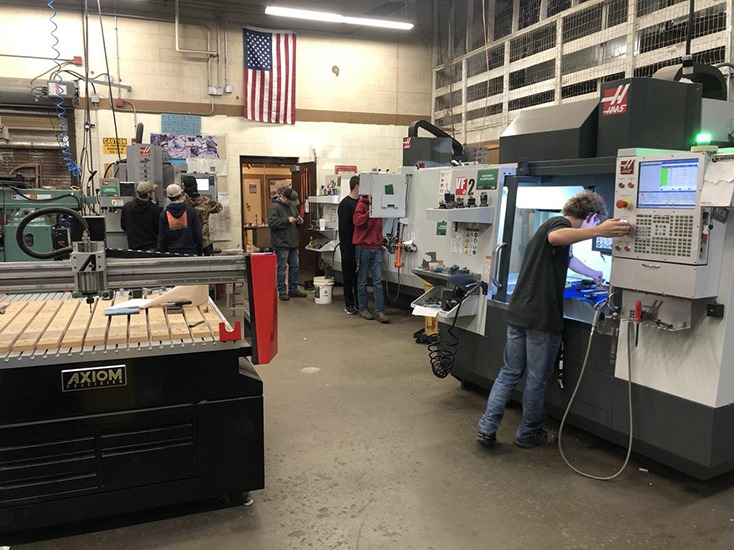
Most CAD/CAM software—or computer-aided design and computer-aided manufacturing software—will come with various libraries as part of its base package. These digital collections of tools and data can be game-changers for most shops, but, unfortunately, libraries are one of the must underused tools within a CAD/CAM program. In this blog, we will explain the different types of libraries you can find in a CAD/CAM system and how best to use them.
Tooling Libraries
A tooling library within a CAD/CAM system is a digital collection of a shop’s inventory of machine cutting tools, or end mills. These tools are what are attached to the CNC machine to act as the cutting implement. Certain end mills are more specialized than others, while some are generalists and can be applied to a wide range of machining applications. This depends on their length, diameter, and shape, and on the material from which they are made. By keeping a comprehensive library of your shop’s tooling, you make finding the perfect tool for the job simple.
Many tooling solutions manufacturers will have digital catalogs of their entire end mill selections, and these catalogs can be uploaded directly into certain CAD/CAM programs. For example, Mastercam partners with Harvey Tool, Sandvik Coromant, and over a dozen other cutting tool developers so that their full tooling collections can be integrated within the Mastercam programming interface. This means that users can quickly and easily find one tool among thousands. Once pulled up within the library, the tool’s digital data will highlight its specifications and applications for ease of use.

Material Libraries
Like tooling libraries, material libraries represent the inventory of a machining shop. The difference is that the material library is a digital collection of the stock material that the shop uses to create its parts. A good material library will not only document how much of each material is present in the shop at a time, it will also record data for each (size, tensile strength, heat tolerance, etc.). For example, aluminum is an exceptional choice of material for aerospace applications because of its strength-to-weight ratio, while cast iron is easy to machine but has low ductility. Your materials library should be able to tell you this.
Fixture Libraries
The fixture is the clamp or vice that holds the stock material in place during cutting. Choosing the best fixture for the job is crucial because the cutting tool needs to be able to reach as much of the part as possible, but the part itself must be kept absolutely stable. Failing to pick a good fixture could mean inefficient cutting and extra set-ups, or it could even result in gouged stock material or a machine crash. Designing a new fixture for each new part is time- and cost-prohibitive, as well. The solution? A fixture library. These libraries will hold the data for all of a shop’s universal, special, assembled, modular, and combination fixtures. This data should include the fixture’s size, shape, mounting information, and supported CNC machines.
Toolpath Strategy Libraries
So far, we’ve gone over libraries that represent real, tangible objects in a shop. The toolpath strategy library is entirely different. Toolpath strategies are the tried-and-true machining approaches created in the process of programming a part. Imagine that you are programming a part with a particularly tricky undercut. After some trial and error, you create a safe and efficient toolpath strategy that cuts exactly what you want. That’s a solution that you’d want to save to your toolpath strategy library for the future. If you come across a similar undercut in the future, you won’t have to spend any time recreating a machining approach. You can simply apply the old one and tweak it if need be. Keeping an updated and thorough toolpath strategy library could mean the difference of hours of programming.
Want to learn more?
There’s so much more to CAD/CAM libraries! If you want to learn more or have specific questions, reach out to your local Mastercam Reseller. They will be able to explain over email or phone. They might even send you more resources!
If you’re ready to explore CAD/CAM libraries on your own, download the free Mastercam Home Learning Edition.


